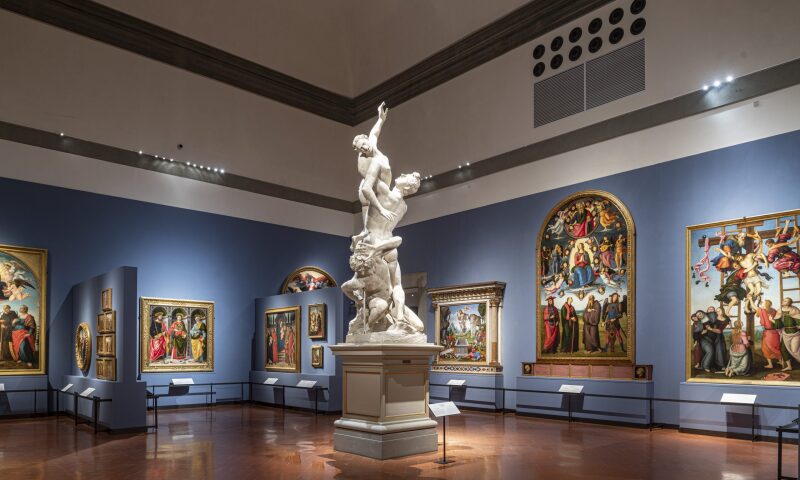Unmissible monument to Michelangelo and Florence

Dating to the late 18th century, Grand Duke Pietro Leopoldo of Tuscany reorganized the Academy of the Arts of Drawing, the Galleria dell'Accademia di Firenze is among the most-visited museums in Italy. Since 1873, it has been the proud home of Michelangelo's “David” — the world’s most famous statue — alongside six other sculptures by the Florentine master, forming the largest such grouping of his works in the world. In its adjacent rooms, important artworks were gathered in the 19th century from the Academy of Design, the Academy of Fine Arts and various convents. The museum’s extensive holdings comprise primarily religious paintings by renowned artists who worked in and around Florence between the mid-13th and late-16th centuries, including Giambologna, Paolo Uccello, Domenico Ghirlandaio, Pietro Perugino, Sandro Botticelli, and Andrea del Sarto. In the Hall of the Colossus, named for the giant casts it once held, visitors can admire the plaster model for the marble sculpture of Giambologna’s “Rape of the Sabine Women.” The collection's gold-ground paintings are also particularly noteworthy, and offer a wonderful showcase of the Florentine Gothic style. The Hall of the Giotto’s displays artworks by 14th century artists who were followers of Giotto, and even includes a detached fragmentary fresco attributed to the master himself, while the first-floor rooms feature a sequence of splendid late-Gothic polyptychs, complete in all their parts. The museum also houses a Musical Instrument Museum, which features more than 40 instruments, among them the exquisite handmade Antonio Stradivari “Medici violin,” crafted from red spruce and maple wood.
